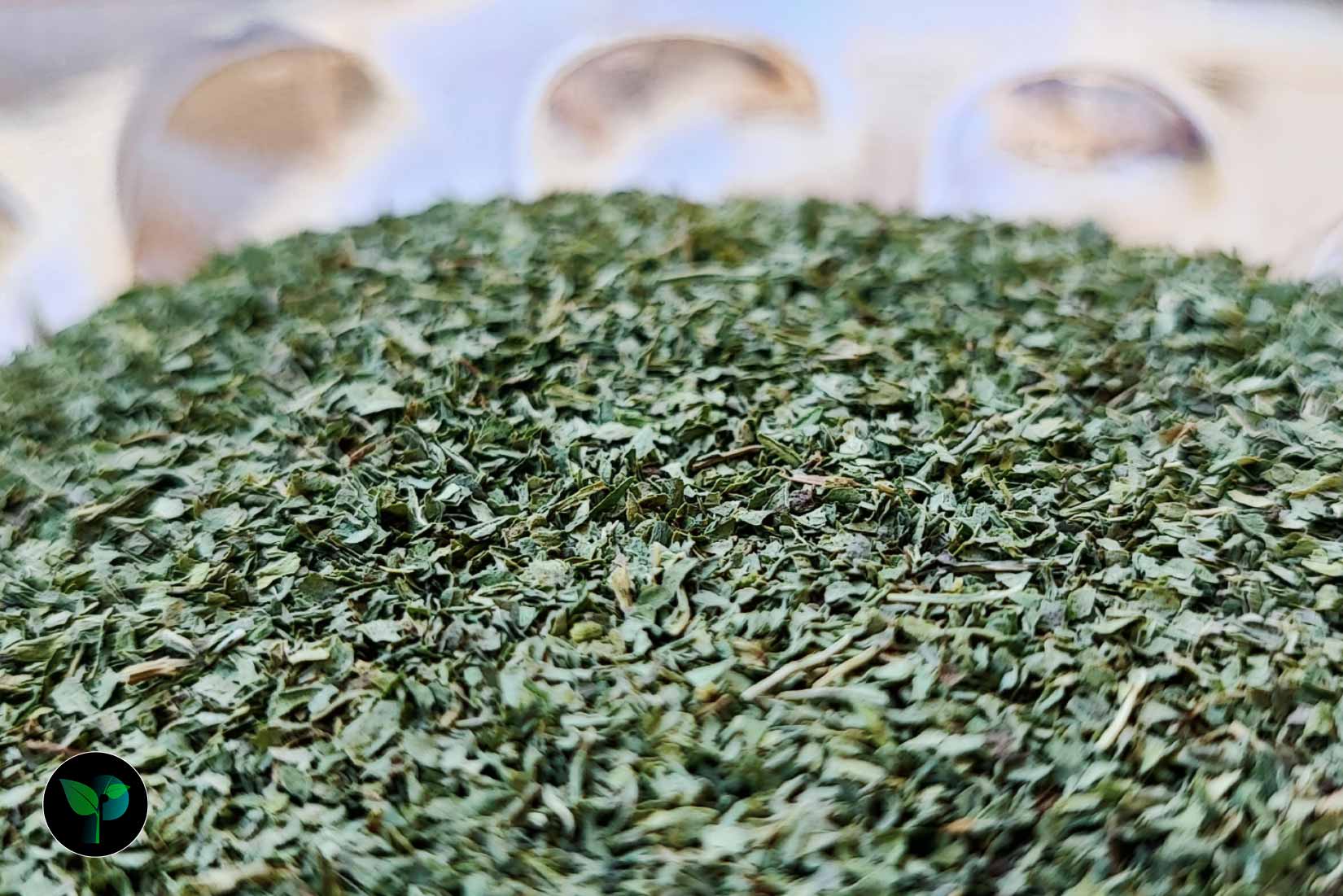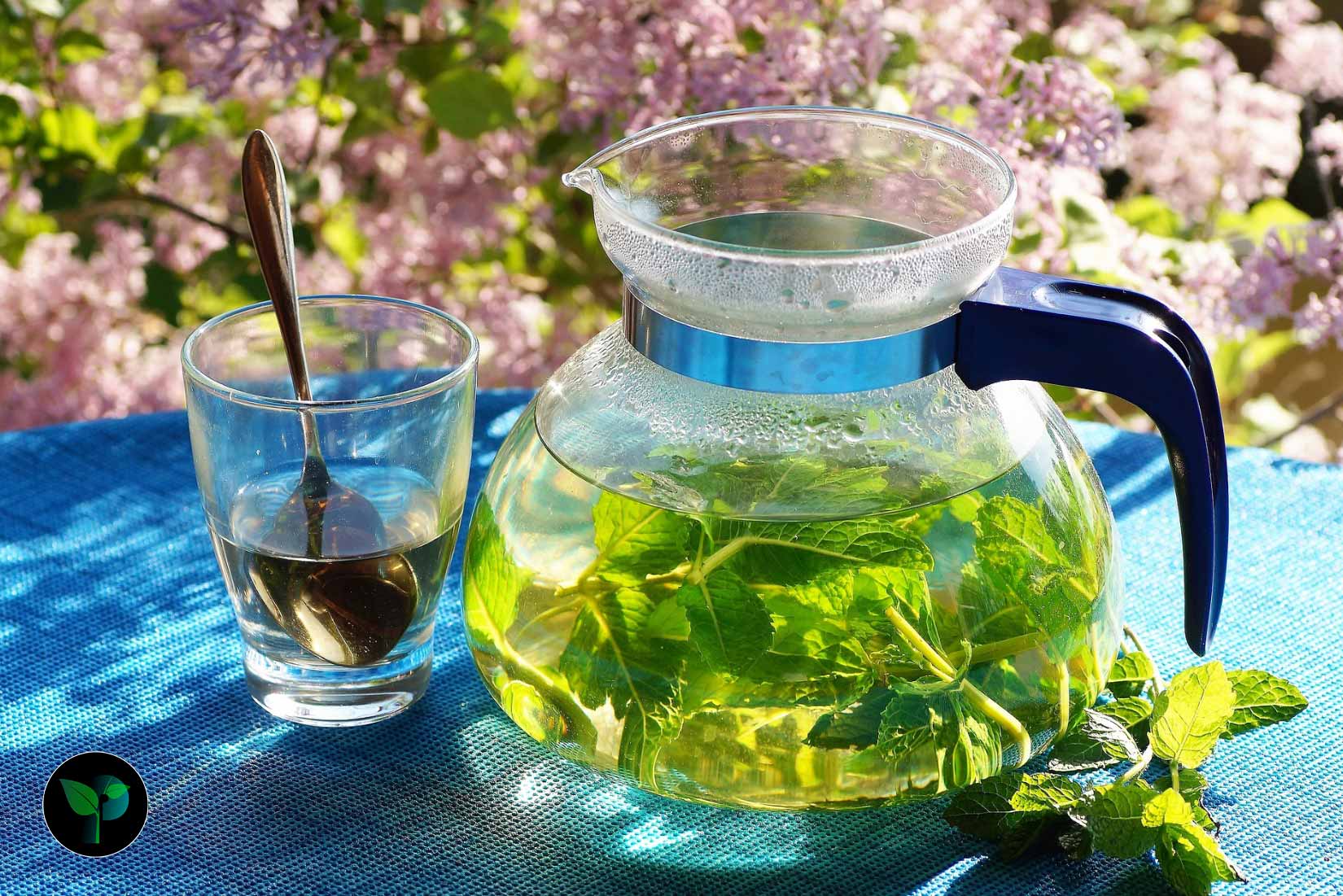There are several reasons why you might choose herbal remedies over chemical drugs. Throughout history, humans have had access to herbal remedies, and understanding their proper usage and dosage is crucial for effectively treating various ailments. In this post, the Plants Folder will provide you with valuable information about the healing properties of the mint plant. Drawing upon scientific research in the fields of botany and traditional medicine, this summary aims to offer insights into the potential benefits of mint as a natural remedy.
Name and Appearance
Mint, scientifically known as Mentha, is a member of the Lamiaceae family and is considered a culinary herb. It has a warm and dry nature and is very similar to pennyroyal in terms of its essential oil and properties; however, its leaves have less hair, and the side cuts of its leaves are more than. pennyroyal It is also worth mentioning that its aroma and taste are also milder. In general, there are two types of mint: wild and cultivated. The quality, properties, and taste of the wild type, which is found in the foothills of low-altitude mountains, are higher.

Morphological Features
Mint is an herbaceous plant with an aerial root and straight, four-sided, and underground stems. Its fragrant stems and leaves are edible and medicinal and sometimes include colorful flowers. The length of its leaves reaches 3 to 5 centimeters, and their appearance is lanceolate or cuneate. They do not have much hair and their edges have deep cuts and the side cuts are sharp. Green mint is usually cultivated all over the world and is widely found in Europe, Asia, Africa, Australia, and North America, but its roots go back to South America and America.
Recent studies based on morphological, cytological, and genetic characteristics have shown that the genus Mentha can be classified into 42 species, 15 hybrids, and hundreds of subspecies, varieties, and cultivars. The classification of this plant is not a simple task and there has always been disagreement in it. Most of its species are perennial, have essential oil, and are widely harvested as industrial products for essential oil production.
The aerial parts of mint dry in winter and under the influence of cold weather, but the underground parts of it, such as stolons and rhizomes, remain alive and continue their activity, albeit to a small extent. The underground parts of the plant are superficial and the branches produced from it are scattered around. Due to the abundant roots and rhizomes of mint, it is also called the centipede plant. Its stems are square and its purple color is derived from the anthocyanin pigment. Its flowers are light purple, pink, and white and grow in clusters. Although its flowers do not last long and quickly become food for insects and bees.
Properties
The most important properties of mint include preventing the occurrence of allergies, helping with weight loss, improving respiratory disorders, strengthening memory, helping with oral hygiene, and strengthening the liver. In addition, mint has been used as a medicinal herb to treat stomach pain and chest discomfort. This herb has many applications in traditional medicine and it is also possible that it is useful in the treatment of irritable bowel syndrome. In the following, we will explain them:
Properties of mint for the stomach
Helps with indigestion.
This herb is like a relaxant for the stomach and has an antiemetic property. Indigestion, gas, and heartburn can be reduced by consuming it.
Stomach pain reliever
This herb has a significant effect on relieving pain and inflammation in the stomach due to its anti-inflammatory and sedative properties. To relieve your stomach pain, simply drink a cup of tea, which acts as an antispasmodic.
Increased bile secretion
This herb increases bile secretion from the bile duct, which in turn facilitates the digestion process and prevents the accumulation of gallstones.
Reduces stomach inflammation
It is effective in reducing stomach inflammation due to its anti-inflammatory properties. Inflammations that may have arisen as a result of stomach ulcers or stomach upset. Menthol present in it has very strong anti-inflammatory properties.
Stomach antiseptic
The antimicrobial properties of this plant have an impact on controlling the growth of stomach bacteria and infections. Ultimately, it leads to the overall health of the stomach.
Stomach acid balancer
If you feel heartburn in your stomach due to increased stomach acids, mint can act as a natural inhibitor to control stomach acids. With this, the function of the stomach returns to its normal course and heartburn is prevented. Finally, if you drink some mint water after every meal, you will be rid of bloating, pain, and harmful stomach microbes.
Properties of mint for the liver
Improvement of digestion and helping the function of the liver
As we mentioned, this herb helps in the secretion of bile from the bile duct, which makes the digestion process easier and prevents liver damage and bile problems.
Anti-inflammatory and disinfectant
Its anti-inflammatory and antimicrobial properties have a significant effect on reducing inflammation and infections of the liver. This property leads to the overall health of the liver.
Relaxant and soothing
This herb reduces stress in the liver with its relaxing properties. A cup of mint tea can relieve all symptoms of stress and anxiety in the liver.
Protection of the liver against oxidative damage
Its antioxidant properties protect the liver from oxidative damage caused by the consumption of chemicals, smoking, or the effects of environmental factors.
Impact of mint on weight loss
If you have a healthy weight loss plan, mint leaves may be helpful for you. According to a study conducted in 2003, this plant releases digestive enzymes, which help the body absorb nutrients from food. As a result, the body consumes fat and converts it into usable energy.
If you switch to drinking unsweetened mint tea instead of constantly consuming soda or other sugary drinks, you have significantly contributed to your weight loss by reducing your calorie intake. A medium cup of unsweetened mint tea, equivalent to twelve ounces, has zero calories, while the same amount of soda has 150 calories.
Properties of mint for the heart and lungs
The anti-inflammatory and relaxing properties of this plant relieve lung inflammation. Including symptoms such as shortness of breath, cough, and inflammation of the respiratory tract. It also has a significant effect in calming long-term symptoms with its cool aroma and flavor. Symptoms such as dry cough, lung inflammation, and shortness of breath. And it acts as an antispasmodic for lung pain. Its anti-inflammatory and antioxidant properties are beneficial in relieving inflammation and oxidative damage caused by heart disease. And it maintains the overall health of the heart.
It even lowers blood pressure in some people. Because it can lower high blood pressure with its relaxing properties, or at least help to reduce it.
Properties of dried mint tea to relieve infection
Dried mint tea, like the plant itself, has antiseptic properties and helps to relieve infections. Its consumption can help reduce the symptoms of respiratory, digestive, and urinary tract infections. It can help with sleep quality, mental relaxation, and anxiety reduction.
Strengthening the immune system
Its leaves contain large amounts of phosphorus, calcium, and vitamins A, C, D, and E, which help to strengthen the immune system. And by protecting the body’s cells from any damage, it reduces the risk of chronic diseases.
Mint essential oil
In the pharmaceutical industry, it is used for mouth freshening in the production of toothpaste and mouthwash. It is also used in the production of cosmetics and some perfumes from menthol present in mint essential oil. Also, after surgery, its essence and oil are used in aromatherapy to relieve nausea. Its oil is used in the production of various creams, shampoos, and hygienic products.
Contraindications
Drug Interactions
Since this herbal tea may interact with medications for indigestion, diabetes, and high blood pressure, and may have side effects, it is recommended that individuals with high blood pressure, indigestion, and diabetes consult their doctor before consuming it.
Allergic Reactions
Despite its numerous benefits, this herbal tea can cause allergic reactions in some individuals due to the abundance of menthol in it. Other symptoms of sensitivity to this plant include headaches and mouth ulcers.
Biliary Patients
Individuals with gallstones, biliary tract disorders, gallbladder issues, and severe liver disease are advised to avoid consuming this plant as it can increase the flow of bile from the liver.
Contraindications for Men
Excessive consumption of this herbal extract can lead to a decrease in testosterone levels in men, ultimately resulting in reduced sexual function and infertility. Therefore, it is recommended to refrain from excessive consumption of it.
High Blood Pressure
Excessive and prolonged consumption of this herbal tea may cause an increase in blood pressure and gastrointestinal discomfort. Although some experts claim that this herbal plant improves blood flow and blood pressure, it is not recommended for individuals with high blood pressure, especially in high concentrations. Excessive consumption of it can hurt blood pressure and increase heart rate.
During Pregnancy and Breastfeeding
Pregnant individuals and breastfeeding mothers should exercise caution when consuming this plant and any products based on it and consult their doctor regarding the amount of consumption. It is also recommended that individuals who have experienced miscarriages refrain from consuming it during their pregnancy. Lastly, it is better to consume this herbal extract with water or a small amount of honey, as it can remain in the esophagus due to increased stomach acid and take some time to close.
Mint tea

Mint tea is a drink with a pleasant taste and aroma that has been found throughout history and in different civilizations. Among its many properties, it can help with weight loss, boost the immune system, aid digestion, improve allergy symptoms, and reduce stress and fatigue. This tea is a caffeine-free and nutritious drink, and it can improve sinus congestion due to its antibacterial and antiviral properties. The presence of menthol, one of the active compounds in this plant, increases airflow in the nostrils, so even the steam of the tea can help you breathe easier.
This tea, due to the natural compounds present in it, has a positive effect on energy levels and can help relieve fatigue and increase energy levels. According to some studies, the relaxing aroma of this tea affects the olfactory system and can be effective in improving headaches that are caused by stress and anxiety. To make mint tea, add some dried mint to boiling water, reduce heat, and let it steep for 5 minutes. Now you can enjoy it with ginger, honey, or sugar.
You can drink this tea at different times of the day, including after meals to help with digestion, in the afternoon to relieve fatigue and increase energy, and at night to help with restful sleep.



Leave a Reply